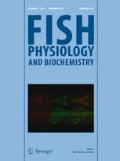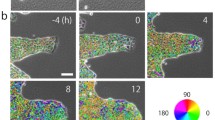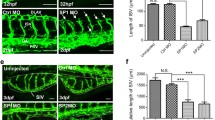Abstract
Epithelial cell adhesion molecule (EpCAM) is a Ca2+-independent and relatively weak adhesion molecule, which has been extensively investigated in mammalian models. However, the functional roles of its fish homolog are largely unknown. In the present study, we explored the biological properties of grass carp EpCAM (gcEpCAM) in a fish kidney cell line (CIK) via overexpression of gcEpCAM or gcEpCAM intracellular domain (gcEpICD) deletion mutant. Results showed that gcEpCAM overexpression significantly changed the cell morphology, and the proliferation of the cells transfected with gcEpCAM was significantly decreased when compared to the control cells, which is unexpectedly opposite to the increasing effects induced by its mammalian homolog. Moreover, overexpression of gcEpICD deletion mutant had no effect on cell proliferation, indicating gcEpICD’s involvement in the cell growth control that is concerted with its role in mammalian model. Additionally, gcEpCAM overexpression increased cell migration which is at least partially consistent with the findings in mammalian cells in which EpCAM expression both positively and negatively affects cell migration. It is worth noting that gcEpICD was not essential to the stimulatory effect of gcEpCAM on cell migration, but overexpression of human EpICD in tumor cells increases cell migration, suggesting the functional discrepancy of EpICD in fish and mammals. In conclusion, we elucidated the cellular functionality of EpCAM in fish cells which will be of benefit to defining the functions of fish EpCAM and also provide rewarding information on the functional evolution of EpCAM in vertebrates.




Similar content being viewed by others
References
Amsterdam A, Nissen RM, Sun Z, Swindell EC, Farrington S, Hopkins N (2004) Identification of 315 genes essential for early zebrafish development. Proc Natl Acad Sci USA 101:12792–12797
Chen X et al (2014) Overexpression of EpCAM and Trop2 in pituitary adenomas. Int J Clin Exp Pathol 7:7907–7914
Dolle L, Theise ND, Schmelzer E, Boulter L, Gires O, van Grunsven LA (2015) EpCAM and the biology of hepatic stem/progenitor cells. Am J Physiol Gastrointest Liver Physiol 308:G233–G250
Gadhari N, Charnley M, Marelli M, Brugger J, Chiquet M (2013) Cell shape-dependent early responses of fibroblasts to cyclic strain. Biochim Biophys Acta 1833:3415–3425
Gires O (2012) EpCAM in hepatocytes and their progenitors. J Hepatol 56:490–492
Gompel N, Cubedo N, Thisse C, Thisse B, Dambly-Chaudiere C, Ghysen A (2001) Pattern formation in the lateral line of zebrafish. Mech Dev 105:69–77
Jachin S et al (2014) The role of nuclear EpICD in extrahepatic cholangiocarcinoma: association with beta-catenin. Int J Oncol 45:691–698
Juliano RL (2002) Signal transduction by cell adhesion receptors and the cytoskeleton: functions of integrins, cadherins, selectins, and immunoglobulin-superfamily members. Annu Rev Pharmacol Toxicol 42:283–323
Kilian KA, Bugarija B, Lahn BT, Mrksich M (2010) Geometric cues for directing the differentiation of mesenchymal stem cells. Proc Natl Acad Sci USA 107:4872–4877
Kroepil F et al (2013) High EpCAM expression is linked to proliferation and lauren classification in gastric cancer. BMC Res Notes 6:253
Liang CC, Park AY, Guan JL (2007) In vitro scratch assay: a convenient and inexpensive method for analysis of cell migration in vitro. Nat Protoc 2:329–333
Litvinov SV, Bakker HA, Gourevitch MM, Velders MP, Warnaar SO (1994a) Evidence for a role of the epithelial glycoprotein 40 (Ep-CAM) in epithelial cell–cell adhesion. Cell Adhes Commun 2:417–428
Litvinov SV, Velders MP, Bakker HA, Fleuren GJ, Warnaar SO (1994b) Ep-CAM: a human epithelial antigen is a homophilic cell–cell adhesion molecule. J Cell Biol 125:437–446
Litvinov SV et al (1997) Epithelial cell adhesion molecule (Ep-CAM) modulates cell–cell interactions mediated by classic cadherins. J Cell Biol 139:1337–1348
Lu H, Ma J, Yang Y, Shi W, Luo L (2013) EpCAM is an endoderm-specific Wnt derepressor that licenses hepatic development. Dev Cell 24:543–553
Maetzel D et al (2009) Nuclear signalling by tumour-associated antigen EpCAM. Nat Cell Biol 11:162–171
Martowicz A, Rainer J, Lelong J, Spizzo G, Gastl G, Untergasser G (2013) EpCAM overexpression prolongs proliferative capacity of primary human breast epithelial cells and supports hyperplastic growth. Mol Cancer 12:56
Momburg F, Moldenhauer G, Hammerling GJ, Moller P (1987) Immunohistochemical study of the expression of a Mr 34,000 human epithelium-specific surface glycoprotein in normal and malignant tissues. Cancer Res 47:2883–2891
Ng VY, Ang SN, Chan JX, Choo AB (2010) Characterization of epithelial cell adhesion molecule as a surface marker on undifferentiated human embryonic stem cells. Stem Cells 28:29–35
Osta WA et al (2004) EpCAM is overexpressed in breast cancer and is a potential target for breast cancer gene therapy. Cancer Res 64:5818–5824
Rape AD, Guo WH, Wang YL (2011) The regulation of traction force in relation to cell shape and focal adhesions. Biomaterials 32:2043–2051
Ripani E, Sacchetti A, Corda D, Alberti S (1998) Human Trop-2 is a tumor-associated calcium signal transducer. Int J Cancer 76:671–676
Schmelzer E, Reid LM (2008) EpCAM expression in normal, non-pathological tissues. Front Biosci 13:3096–3100
Schnell U, Cirulli V, Giepmans BN (2013) EpCAM: structure and function in health and disease. Biochim Biophys Acta 1828:1989–2001
Shen CI et al (2014) EpCAM induction functionally links to the Wnt-enhanced cell proliferation in human keratinocytes. Cell Transplant 23:1031–1044
Slanchev K, Carney TJ, Stemmler MP, Koschorz B, Amsterdam A, Schwarz H, Hammerschmidt M (2009) The epithelial cell adhesion molecule EpCAM is required for epithelial morphogenesis and integrity during zebrafish epiboly and skin development. PLoS Genet 5:e1000563
Tang QY, Qian WX, Xu YH, Gopalakrishnan S, Wang JQ, Lam YW, Pang SW (2015) Control of cell migration direction by inducing cell shape asymmetry with patterned topography. J Biomed Mater Res A 103:2383–2393
Thakar RG et al (2009) Cell-shape regulation of smooth muscle cell proliferation. Biophys J 96:3423–3432
Thery M, Bornens M (2006) Cell shape and cell division. Curr Opin Cell Biol 18:648–657
Trzpis M, McLaughlin PM, de Leij LM, Harmsen MC (2007) Epithelial cell adhesion molecule: more than a carcinoma marker and adhesion molecule. Am J Pathol 171:386–395
Villablanca EJ et al (2006) Control of cell migration in the zebrafish lateral line: implication of the gene “tumour-associated calcium signal transducer”, TACSTD. Dev Dyn 235:1578–1588
Wang X, Wang Y, Yang M, Zhou H (2010) A newly identified epithelial cell adhesion molecule (EpCAM) from grass carp (Ctenopharyngodon idellus): cloning, tissue distribution and lipopolysaccharide-induced expression in head kidney leucocytes. Fish Shellfish Immunol 29:998–1002
Went P et al (2006) Frequent high-level expression of the immunotherapeutic target Ep-CAM in colon, stomach, prostate and lung cancers. Br J Cancer 94:128–135
Winter MJ, Nagelkerken B, Mertens AE, Rees-Bakker HA, Briaire-de Bruijn IH, Litvinov SV (2003) Expression of Ep-CAM shifts the state of cadherin-mediated adhesions from strong to weak. Exp Cell Res 285:50–58
Yoon SM, Gerasimidou D, Kuwahara R, Hytiroglou P, Yoo JE, Park YN, Theise ND (2011) Epithelial cell adhesion molecule (EpCAM) marks hepatocytes newly derived from stem/progenitor cells in humans. Hepatology 53:964–973
Zhong Y, Ji B (2013) Impact of cell shape on cell migration behavior on elastic substrate. Biofabrication 5:015011
Zuo W, Qian H, Xu Y, Du S, Yang X (1986) A cell line derived from the kidney of grass carp (Ctenopharyngodon idellus). J Fish China 10:11–17
Acknowledgments
This work was supported by the grants from the National Natural Science Foundation of China (31101877, 31471181).
Author information
Authors and Affiliations
Corresponding author
Rights and permissions
About this article
Cite this article
Wang, X., Guo, Y., Wei, H. et al. Regulatory roles of grass carp EpCAM in cell morphology, proliferation and migration. Fish Physiol Biochem 42, 423–430 (2016). https://doi.org/10.1007/s10695-015-0148-4
Received:
Accepted:
Published:
Issue Date:
DOI: https://doi.org/10.1007/s10695-015-0148-4




